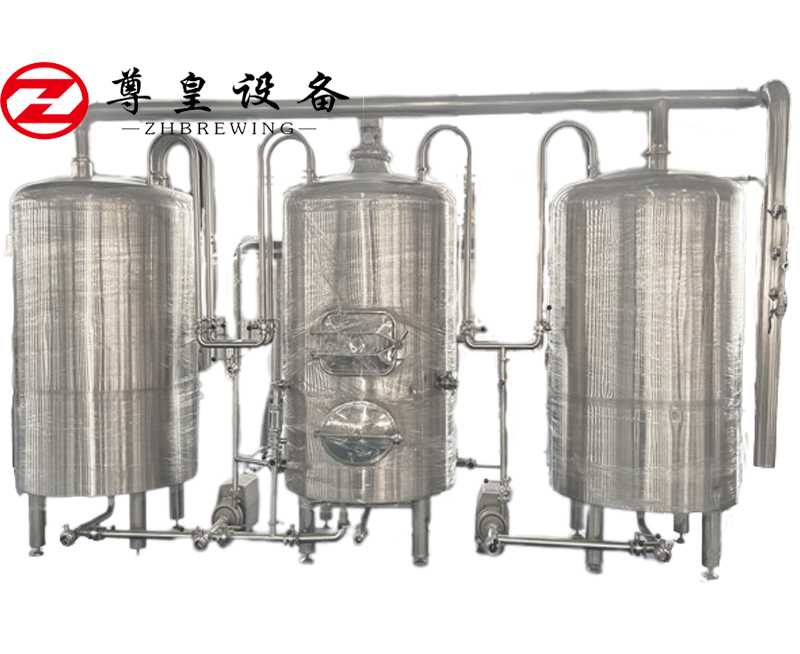The saccharification system is the most important component of the entire beer equipment. The size of the equipment can be selected according to the output. Many large breweries use three pots and two tanks for saccharification (paste pot, saccharification pot, filter tank, boiling pot, rotary sedimentation tank), and our current commercial equipment is usually matched with three or four saccharification containers, some of which have multiple functions. The mainstream equipment for small breweries is split three-vessel saccharification, split four-vessel saccharification is more common, and bars and beer houses mostly use two-vessel three-vessel, two-vessel is the most common, two-vessel saccharification and two-vessel three-vessel saccharification occupy a small area and can be matched with the number of fermentation tanks according to the output.


The two-body three-device has a high market acceptance and high cost-effectiveness. It is also the best equipment generally chosen by craft beer lovers. The equipment is divided into a saccharification boiling pot, which is a one-pot dual-purpose pot. The filter tank and the rotary sedimentation tank are two layers, the upper one is the filter tank, and the lower one is the rotary sedimentation tank. The appearance of the equipment conforms to the aesthetics of the Chinese people. The stirring and tilling blade motors are variable frequency motors, which are stable and easy to operate. The heating method can be selected from direct fire heating, electric heating and steam heating. The steam is a steam jacket. The heating area of steam heating is uniform and it is not easy to stick the pot.
The filter tank is on the upper layer and has a higher position. The filtration can be achieved by natural filtration or suction filtration. The filtration efficiency is high and the wort is clear.
The filter tank is equipped with a lees washing coil, which is washed by pumping, excluding manual lees washing, ensuring the uniformity of lees washing, and high efficiency.
The two-body equipment can generally brew two batches a day continuously. If you stay up late and work overtime, you can brew three to four batches a day. Increase the brewing speed, shorten the time, brew more beer in a short time, and don’t be afraid of the peak of beer.
In addition, the pipeline of the equipment is also extremely important. The pipeline should be simple and direct, and also beautiful in design. It is not worthwhile for the manufacturer to abandon the use of the pipeline for the sake of beautiful pipeline. Because in the process of feeding and pouring, if the pipeline is complicated, there will be a certain amount of residual material inside the pipeline. Over time, if there are too many residual materials that are not cleaned in time, it is easy to get bacteria and odor inside the pipeline. The pipeline design can also communicate with the manufacturer's designer to design the pipeline to your satisfaction.
The wort filtered by the filter tank can be temporarily stored in the rotary sedimentation through natural filtration, and the saccharification can be used to prepare the slag washing water. The slag washing can also be carried out at the same time during filtration, which can save about half an hour to fifty minutes in time.
The rotary sedimentation tank is a tangential feeder, and the tangential entrance of the wort is the entrance designed for the tank body. The slope matching design does not consider too many influencing conditions, so the separation effect of the hop tank and the hot coagulant is good.


